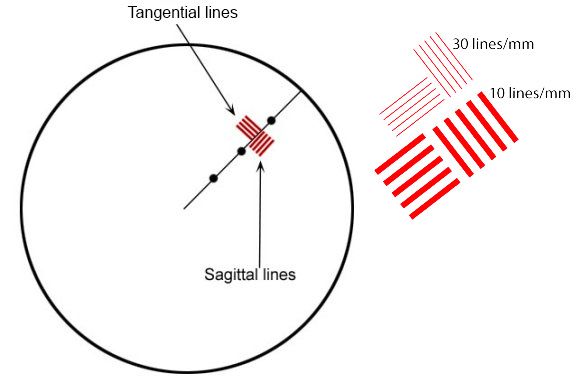Just MTF Charts
Just the MTF Charts: Micro 4/3 Lenses
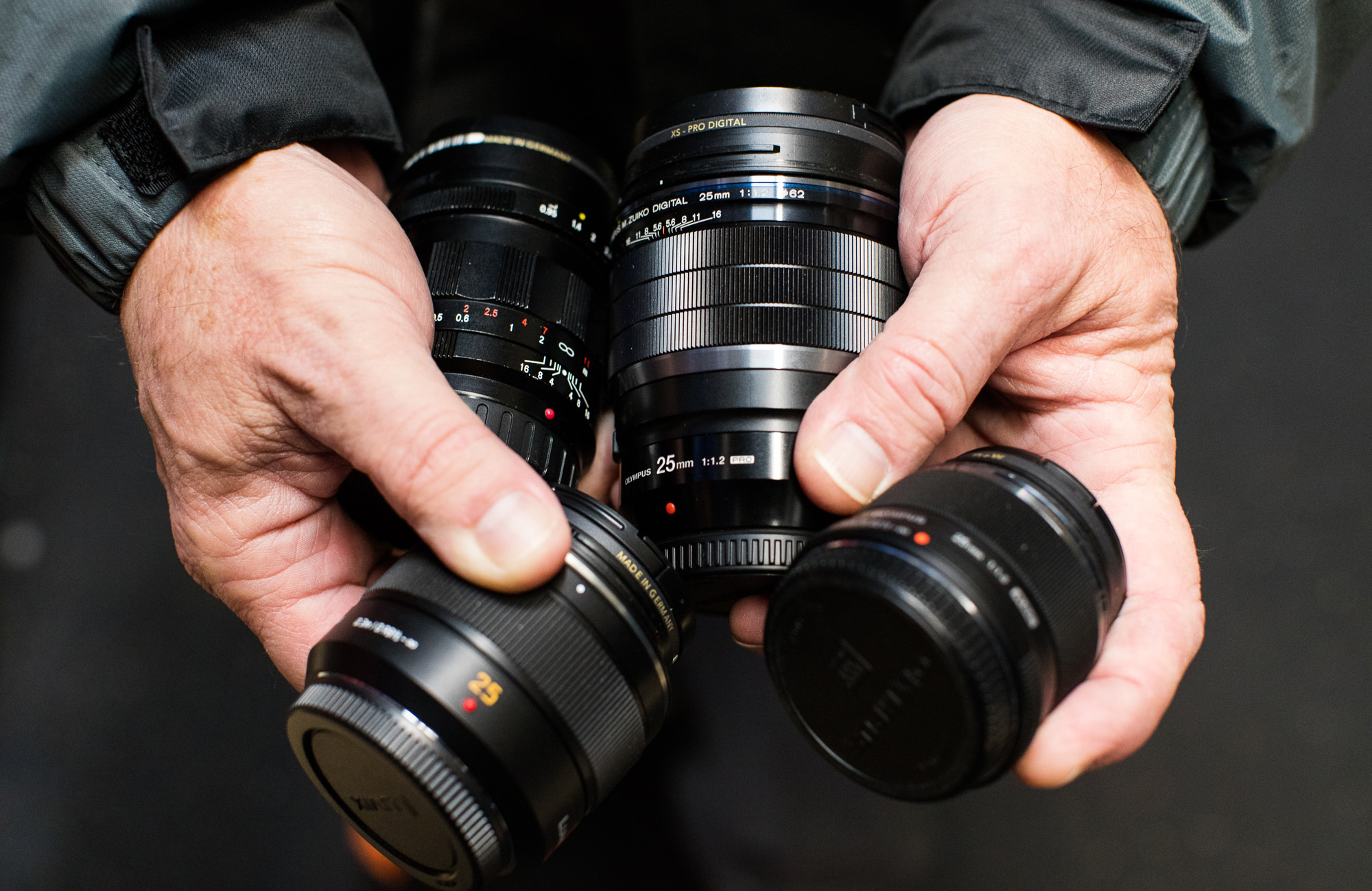
Not a lot to say specifically about the m4/3 lenses except please don’t ask why your favorite isn’t on here; this is all I’ve got. Some of the newer m4/3 have linear electronic focusing which can’t be tested on the bench without a specialized, expensive mount and we don’t have one. Even for the ones I have here, many don’t have 10 copies. Micro 4/3 doesn’t rent as much as it used to and we don’t have the kind of stock that we do in other mounts.
A Quick How to on Reading MTF ChartsIf you’re new here, you’ll see we have a scientific methodology to our approach, and use MTF charts to measure lens resolution and sharpness. All of our MTF charts test ten of the same lenses, and then we average out the results. MTF (or (or Modulation Transfer Function) Charts measure the optical potential of a lens by plotting the contrast and resolution of the lens from the center to the outer corners of the frame. An MTF chart has two axis, the y-axis (vertical) and the x-axis (horizontal). The y-axis (vertical) measures how accurately the lens reproduces the object (sharpness), where 1.0 would be the theoretical “perfect lens”. The x-axis (horizontal) measures the distance from the center of a lens to the edges (measured in millimeters where 0mm represents the center, and 20mm represents the corner point). Generally, a lens has the greatest theoretical sharpness in the center, with the sharpness being reduced in the corners. Tangential & Sagittal LinesThe graph then plots two sets of five different ranges. These sets are broken down into Tangential lines (solid lines on our graphs) and Sagittal (dotted lines on our graphs). Sagittal lines are a pattern where the lines are oriented parallel to a line through the center of the image. Tangential (or Meridonial) lines are tested where the lines are aligned perpendicular to a line through the center of the image. From there, the Sagittal and Tangential tests are done in 5 sets, started at 10 lines per millimeter (lp/mm), all the way up to 50 lines per millimeter (lp/mm). To put this in layman’s terms, the higher lp/mm measure how well the lens resolves fine detail. So, higher MTF is better than lower, and less separation of the sagittal and tangential lines are better than a lot of separation. Please keep in mind this is a simple introduction to MTF charts, for a more scientific explanation, feel free to read this article. |
Olympus
Olympus M. Zuiko 12mm f/2.o
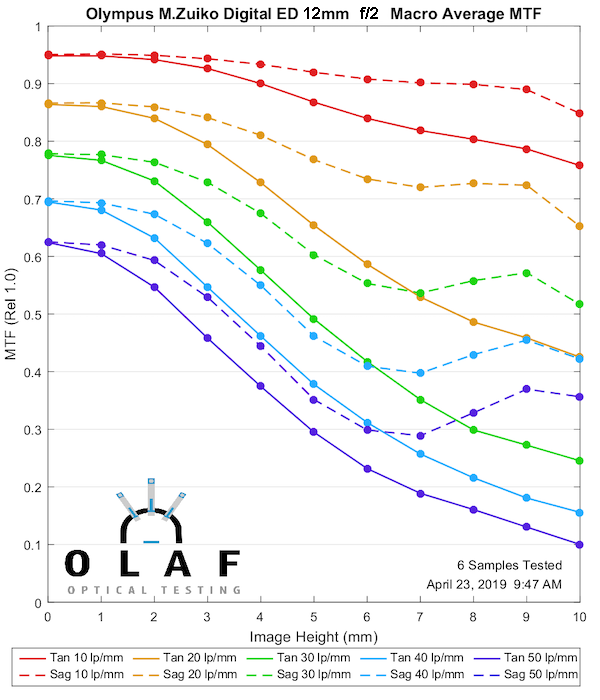
Lensrentals.com, 2019
Olympus M. Zuiko 17mm f1.2 PRO
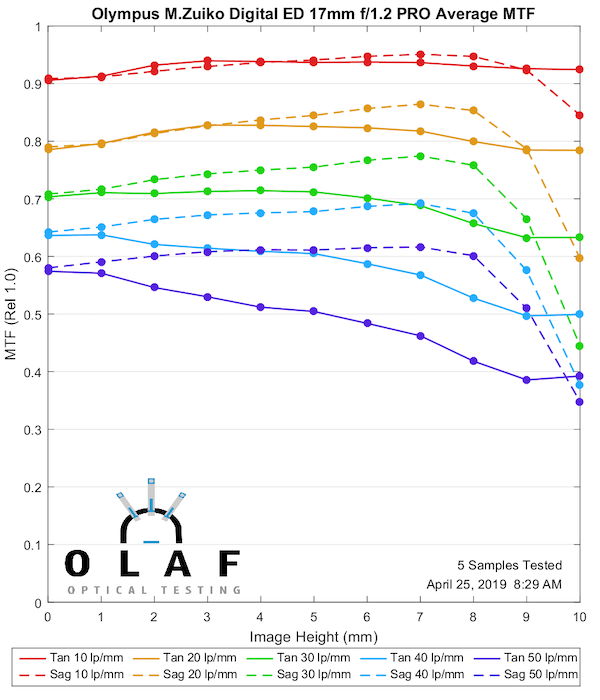
Lensrentals.com, 2019
Olympus M. Zuiko 17mm f1.8
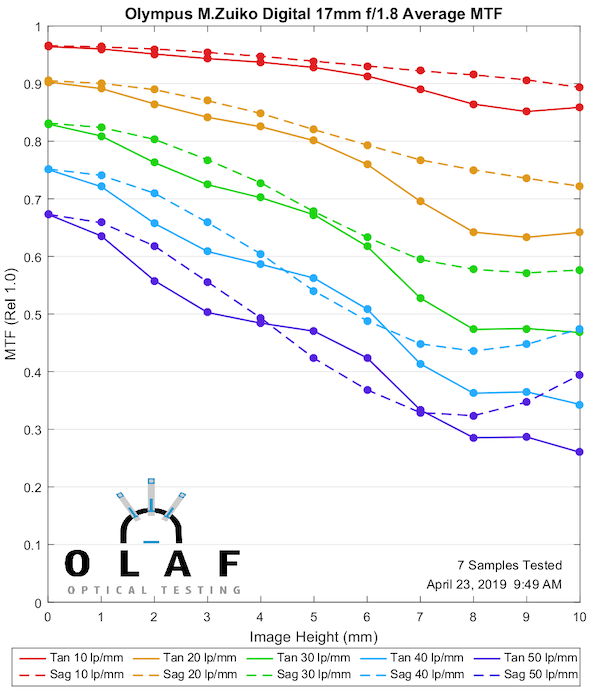
Lensrentals.com, 2019
Olympus M. Zuiko 25mm f1.2 Pro
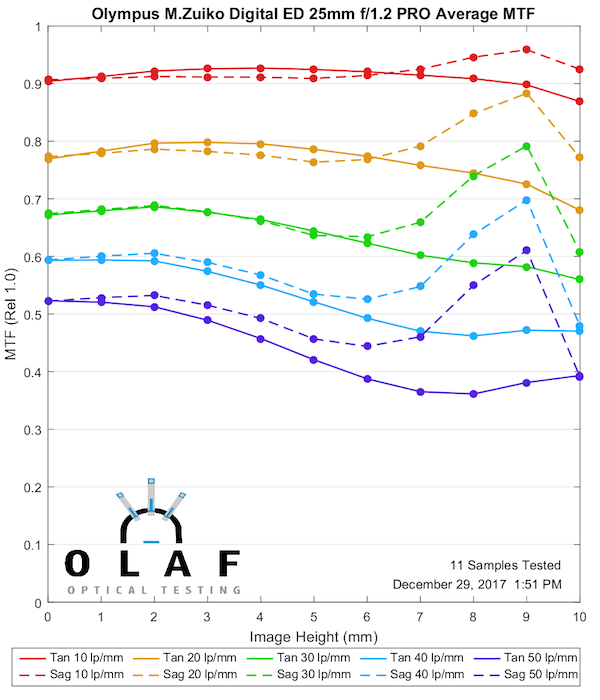
Lensrentals.com, 2019
Olympus M. Zuiko 25mm f1.8
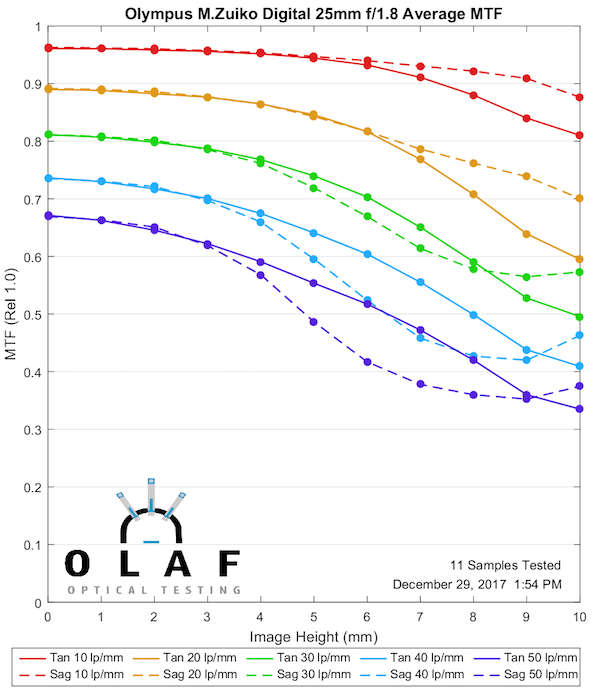
Lensrentals.com, 2019
Olympus M. Zuiko 45mm ED f1.2 Pro
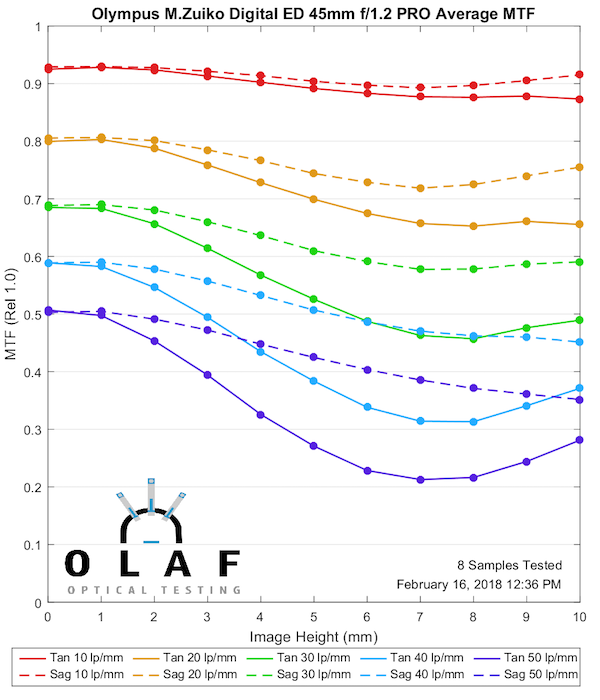
Lensrentals.com, 2019
Olympus M. Zuiko 45mm f1.8
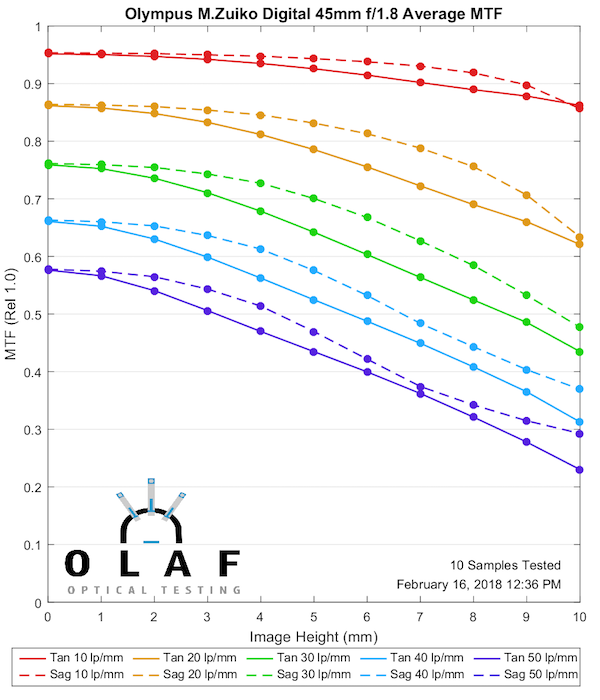
Lensrentals.com, 2019
Olympus M. Zuiko 75mm f1.8
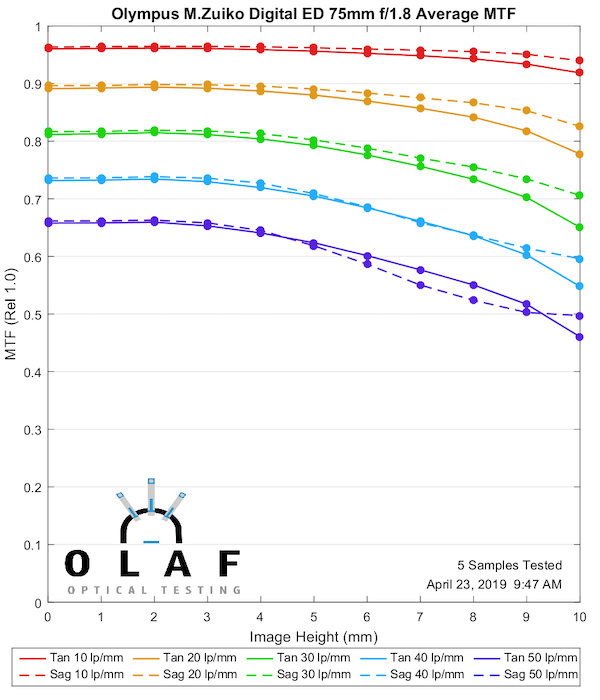
Lensrentals.com, 2019
Panasonic
Panasonic DG Summilux ASPH 25mm f1.4
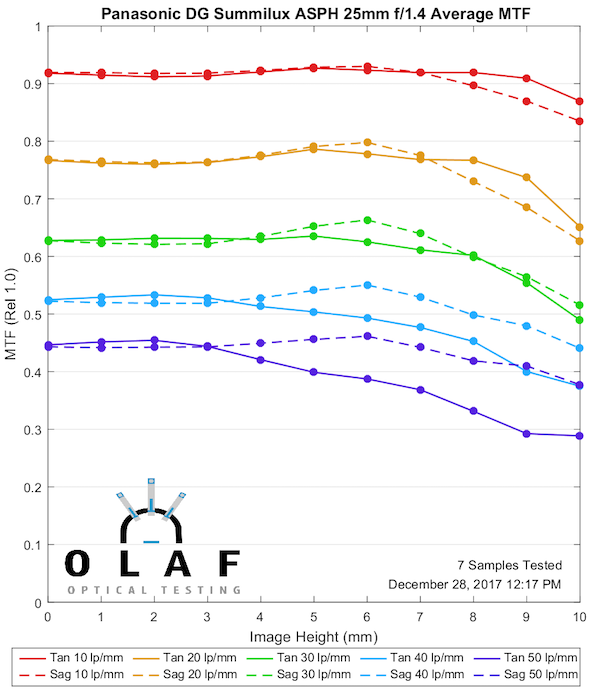
Lensrentals.com, 2019
Panasonic-Leica 42.5 Noctitron f1.2
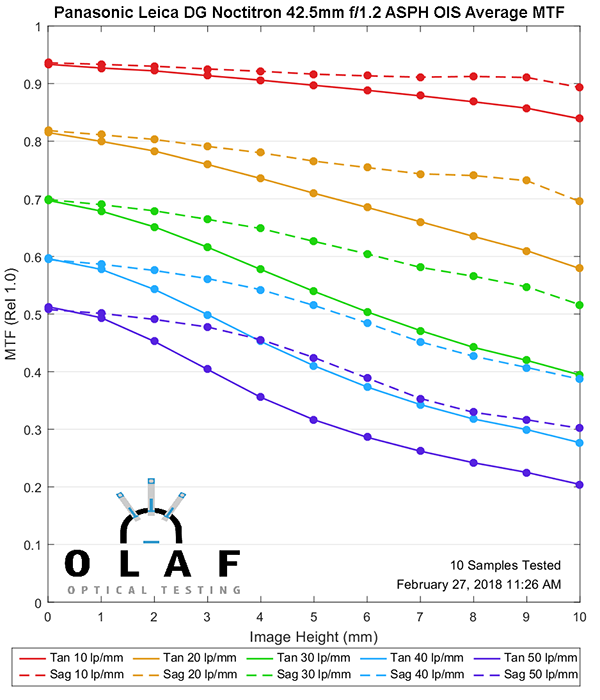
Lensrentals.com, 2019
Panasonic Lumix 42.5mm f1.7 OIS
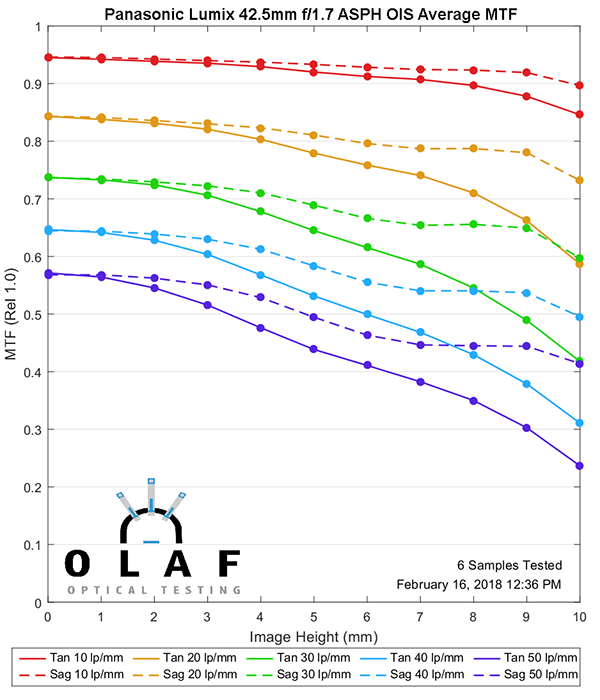
Lensrentals.com, 2019
Panasonic-Leica DG Macro OIS 45mm f2.8
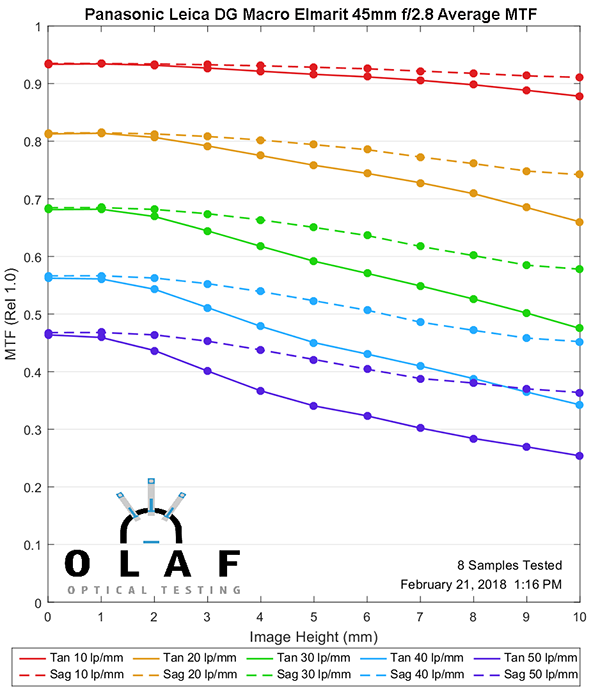
Lensrentals.com, 2019
Voigtlander
25mm f0.95 Type II
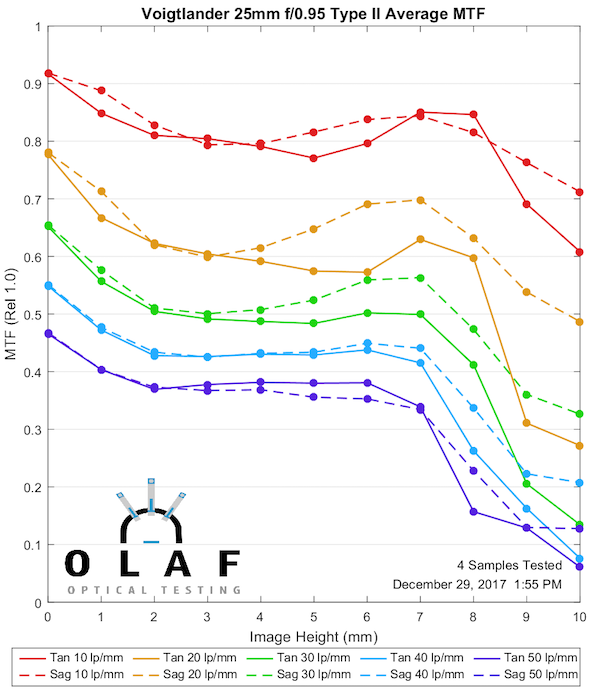
Lensrentals.com, 2019
42.5 f0.95 Aspherical
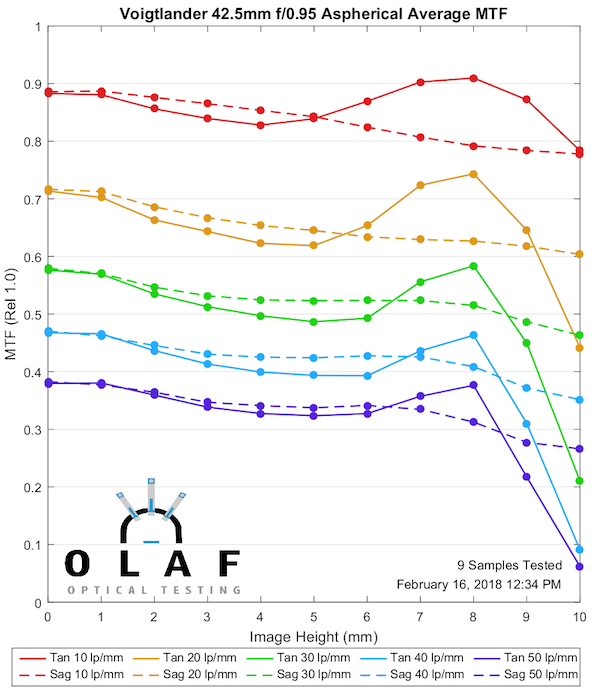
Lensrentals.com, 2019
For a look at all the Just MTF Articles we’ve done so far, be sure to check them out here
Roger Cicala, Aaron Closz, and Brandon Dube
Lensrentals.com
May 2019
Author: Roger Cicala
I’m Roger and I am the founder of Lensrentals.com. Hailed as one of the optic nerds here, I enjoy shooting collimated light through 30X microscope objectives in my spare time. When I do take real pictures I like using something different: a Medium format, or Pentax K1, or a Sony RX1R.
-
Impulse_Vigil
-
Eduardo Vidarte Charola
-
Hank Roest
-
Maksim Medushkin
-
Roger Cicala
-
Maksim Medushkin
-
Taki Tsonis
-
AF
-
tripper
-
Shlomo Levi
-
Ryan Brenizer
-
Niko PetrHead
-
Andreas Werle
-
Brandon Dube
-
munotika
-
Roger Cicala
-
Roger Cicala
-
munotika
-
Deanaaargh
-
Roger Cicala
-
Niko PetrHead
-
Roger Cicala
-
Roger Cicala
-
Roger Cicala
-
Roger Cicala
-
Roger Cicala
-
J.L. Williams
-
J.L. Williams
-
Deanaaargh
-
Andreas Werle
